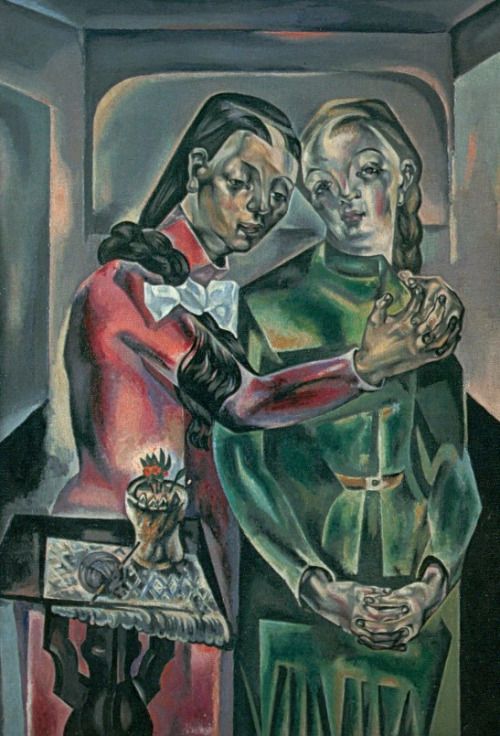|
Maria Blanchard's Two Sisters I have a portrait like it, a photo of myself in profile, left arm slung over my little sister’s shoulder. We are ages two and four, and I’m half naked in the summer grass, she wears a sweet dress. In Blanchard’s painting, the sisters are grown, wearing long-sleeved floor-length gowns, one red, one green, both women have the long braids my sister and I were known for in school. She held onto her hair longer than I, and I still have the braid she saved before chemo. “Magnificent in size and colour,” clearly cubistic in the underlying shapes of arms and background, but moving beyond Gris’s cubism to her more human faces, especially the visage of the embraced sister, who looks at us as the other looks down, this painting holds a story at the left on the table with its ball of yarn, crossed through with a needle, and a jar of flowers. Years later, deepest in the penury she knew all her life in Paris, Blanchard scraped up the money to buy it back, because, she said, the purchaser, though a sensitive woman, did not see the sad story that Maria saw “on this table that I love.” A perfect example of what her grandniece means when she says in an interview, “Maria had no business sense whatsoever.” Diane Kendig Diane Kendig’s four poetry chapbooks include Prison Terms (forthcoming), while her editing includes the recent anthology In the Company of Russell Atkins. A recipient of two Ohio Arts Council Fellowships in Poetry and a Fulbright translation award, she has published poetry and prose in journals such as J Journal and Ekphrasis, and she blogs at “Home Again” (http://dianekendig.blogspot.com/).
0 Comments
Your comment will be posted after it is approved.
Leave a Reply. |
The Ekphrastic Review
COOKIES/PRIVACY
This site uses cookies to deliver your best navigation experience this time and next. Continuing here means you consent to cookies. Thank you. Join us on Facebook:
July 2024
|




